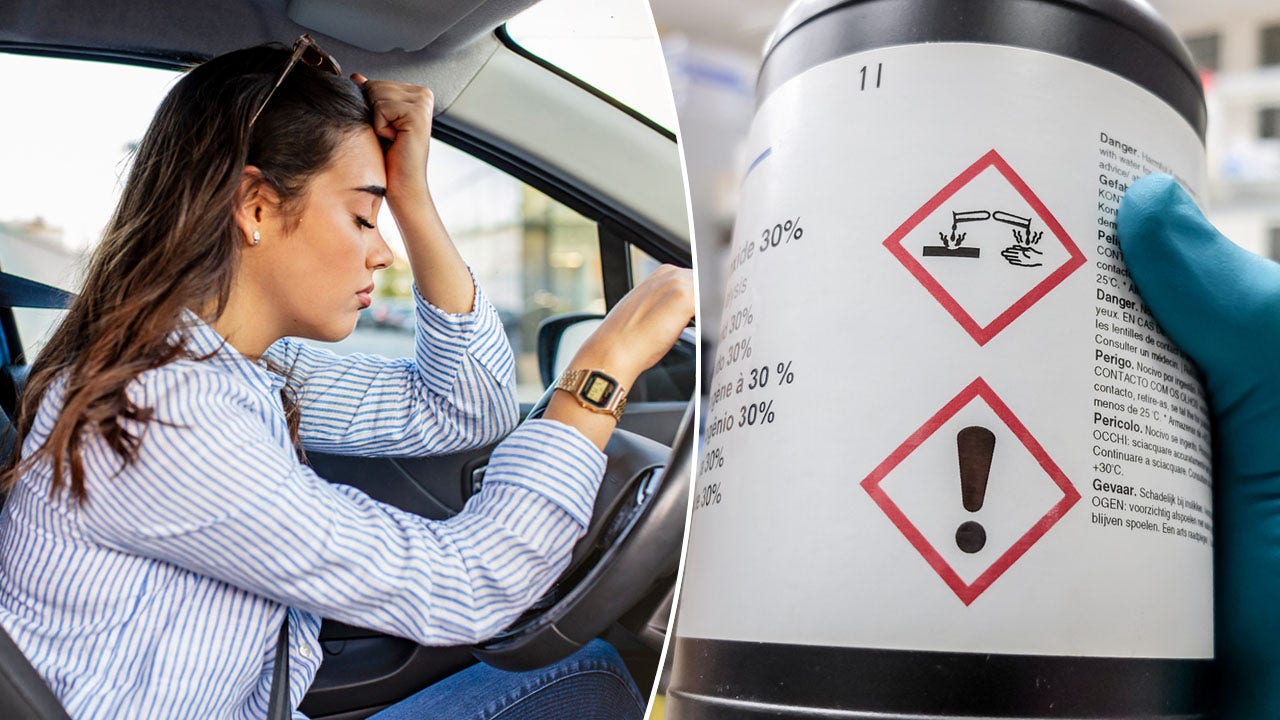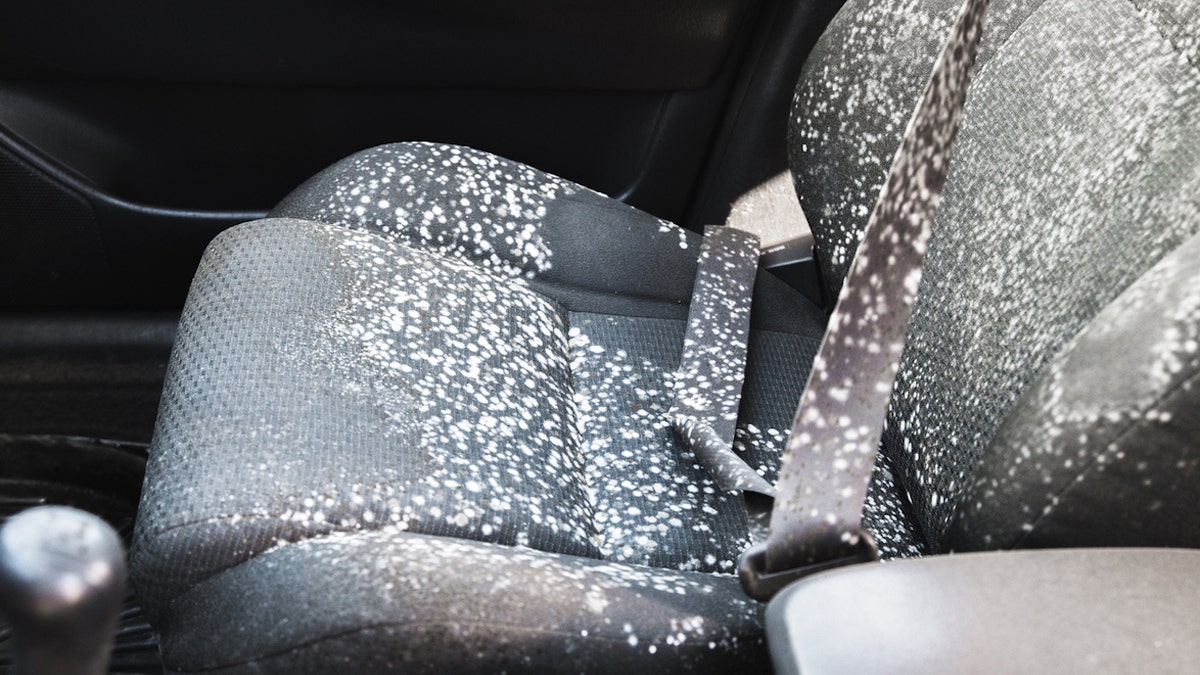Health
Doctor + Nutritionist: 10 Easy Ways to Heal a Fatty Liver Fast to Boost Fat Burn by 400%

If you’ve noticed your pants are more snug lately, find yourself tired long before bedtime and have borderline high cholesterol, a liver bogged down by fat may be to blame. Indeed, the liver plays more than 500 roles in the body. Among its many functions, the organ filters out toxins, supports immunity and digestion, and keeps blood glucose from climbing. You may be familiar with all that but wonder if a fatty liver can cause weight gain. Since the liver plays a key role in burning fat, when it becomes clogged with fat of its own, more fat becomes deposited throughout your body. The good news: realizing that a fatty liver is causing your unexplained weight gain is the first step to healing the problem — and losing weight effortlessly.
What leads to fatty liver?
“Think of the liver as a processing plant that never shuts down,” suggests Cleveland Clinic functional medicine expert Mark Hyman, MD. “When the liver is working well, you feel great. Your metabolism hums, your brain is sharp, your blood sugar and hormones are well-balanced, you sleep well.”
But doing all these jobs can take a toll on the organ. “The liver tends to get tired with age, especially if you’re under stress or carrying excess fat,” explains Christine Gerbstadt, MD, RD, a nutritionist and physician at the National Institutes of Health. “You can picture it as a partially clogged drain: It’s still working, but at a much slower pace.”
And when the liver can’t keep up with its fat-burning functions, fat gets stuck in the organ. The result: Fatty liver, a condition that impacts up to 80% of women over 40, according to nutritionist Ann Louise Gittleman, PhD. But can fatty liver cause weight gain? Experts say the answer is a resounding “yes.”
How fatty liver causes weight gain
“Anytime you develop liver fat, your metabolic rate is going to slow,” explains Taz Bhatia, MD. “Fat impairs the liver’s metabolic and detoxifying functions, which in turn saps physical and mental energy and triggers weight gain.” Plus, fatty liver doubles a fat-storing process known as de novo lipogenesis, according to experts at University of Texas Southwest Medical Center. The result: Findings in the journal Medicine reveal that as fat accumulates in the liver, belly fat increases by 113%. The good news is that clearing out the fat that’s clogging your liver optimizes your metabolism to boost fat-burning by a whopping 400%, say researchers reporting in the journal Cell Metabolism.
The benefits a healthy liver
Purging fat from your liver does more than speed slimming. Once your liver is clear of clogging fat, the organ’s ability to keep a lid on cholesterol is optimized. This reduces atheroscerlosis, a condition that occurs when fatty plaques from in arteries. The result, according to a study in the World Journal of Gastoenterology: Risk of heart disease plummets by 76%. What’s more, findings in the journal Oncotarget suggest stroke risk drops by up to 62%.
Lowering fat levels in your liver also reduces inflammation in the organ, enhancing its sensitivity to the hormone insulin. And research in Diabetes Care found this allows the liver to process glucose more efficiently, lowering the odds of developing diabetes by 55%. (Click through to the find the simple lifestyle tweaks that help reverse prediabetes.)
Since the inflammation produced by fatty liver can cause production of the feel-good brain chemical serotonin to falter, paring down liver fat lifts your spirits, too. In fact, a study in Frontiers in Medicine suggests foiling fatty liver lowers risks of anxiety and blue moods up to 59%. And in another happy side effect, findings in the journal Gut suggest a leaner liver sends energy levels soaring by 85%.
The best ways to slim your liver — and burn fat faster
Reversing fatty liver doesn’t have to involve hard work or deprivation. In fact, these “skinny liver” strategies are as easy as they are enjoyable.
Dig into scrambled eggs for breakfast
Two eggs deliver 58% of the choline you need each day. That’s key, since findings from the University of North Carolina at Chapel Hill reveal that correcting shortfalls in the nutrient (which impact 92% of women) can reverse fatty liver within 30 days. Also smart: Opting for eggs enriched with omega-3s whenever possible. The friendly fatty acids keep liver-clogging fats called triglycerides in check. And in a study in the journal Clinical Nutrition ESPEN , those who upped their omega-3 intake (folks took 2,000 mg. omega-3s daily) significantly lowered their liver fat levels in 12 weeks. Tip: Consider Eggland’s Best eggs, which contain twice as many omega-3s as ordinary eggs.

Pour yourself another cup of coffee
Love lingering over a second cup of java on lazy mornings? Your liver does too! A study in the Journal of Nutritional Sciences suggests sipping 2 cups of coffee daily boosts the liver’s ability to burn off stored fat by 233%. And in European Journal of Clinical Nutrition study, folks who drank 2 to 3 cups of coffee daily lowered their odds of developing fatty liver by 78%. Experts explain that coffee compounds such as caffeine and chlorogenic acid activate genes that optimize fat breakdown in the organ.
Flavor foods with sesame oil
Enjoying 2 Tbs. of nutty-tasting sesame oil in salad dressings, stir-frys and noodle dishes daily can reverse fatty liver in as little as 12 weeks, according to a studyin the International Journal of Clinical Practice. Credit goes to nutrients such as vitamin E and lecithin, which protect the liver from damage that triggers fat deposition. (Click through to discover more benefits of sesame oil.)
Tuck into a tuna melt or chicken tetrazzini
Just 3 oz. of chicken or about half a can of tuna boasts 12 mg. of a B vitamin known as niacin. And a study in Scientific Reports reveals boosting your daily niacin intake by that amount lowers liver fat by 37%. The reason: Niacin blunts the action of diacylglycerol acyltransferase 2, an amino acid that stimulates fat formation in the organ. (Sardines boast about 7 mg of niacin a serving: Click through to learn how sardines can speed weight loss.)
Give green tea a spicy kick
Compounds in ginger have a powerful ability to enhance activity of enzymes that combat fat buildup, say researchers reporting in Hepatiitis Monthly. In their study, folks who added 2 grams (about one heaping teaspoon) of the spice to their daily diets experienced liver-fat reductions that were 372% greater than people who didn’t enjoy the spice. Ginger makes a tasty addition to smoothies, rice dishes and marinades. (Click through to learn more health benefits of ginger.)
But for an added anti-fat assist, try stirring it into green tea: Catechins in the brew help the body convert fat into fuel. And in a study in the International Journal of Molecular medicine, sipping three cups of catechin-rich green tea daily for 12 weeks spurred significant reductions in liver fat. Plus, participants who drank the brew lost 322% more weight than their counterparts who sipped a “fake” tea-flavored drink.
Take Fido for an afternoon stroll
Go ahead and set aside your to-dos to meander around the block or take your dog on a stroll. Getting 20 to 30 minutes of exercise daily triggers the breakdown of fat in the liver. This leaves the organ 33% ‘skinnier’ within 16 weeks, say researchers reporting in the journal Hepatology. And if you prefer to scale back a bit from time to time, permission granted: According to a study in JAMA Internal Medicine, walking slims your liver as effectively as strenuous workouts. Bonus: Folks who walked for 150 minutes weekly lost over 4 pounds and nearly an inch from their waistlines in 6 months. (Click through to discover the walking accessory that helps you burn more fat on every walk.)

Simmer up spaghetti sauce for dinner
Tomatoes are jam-packed with lycopene, a compound that curbs the overactivity of immune cells that can cause the liver to hoard fat. In fact, findings in the journal Antioxidants suggest drinking a cup of tomato juice daily lowers fat levels in the organ by 55% in 10 weeks. Prefer tomato soup or sauce instead? Go ahead and enjoy! Cornell scientists found heat enhances the release of lycopene from tomatoes, making cooked tomato products stellar sources of the compound. (Click through to see the simple trick to peeling tomatoes in seconds.)
Add fresh garlic to your favorite dishes
A compound called allicin found in the tasty herb has a powerful ability to flush fat from your liver. In fact, a study in the journal Diabetes, Metabolic Syndrome and Obesity suggests that enjoying a clove of garlic daily delivers an allicin dose that lowers fat in the organ by as much as 61% in 15 weeks. Tip: Let crushed or chopped garlic rest for 10 minutes before adding to recipes. According to Penn State investigators, doing so releases an enzyme in the herb that optimizes its allicin content.
Unwind with a glass of red wine
While it seems counterintuitive, sipping one glass of wine (about 4 oz.) daily cuts fatty liver risk by 50%, according to investigators at the University of California San Diego reporting in the journal Hepatology. Experts explain polyphenol compounds in wine protect against the cell damage that triggers fat accumulation in the liver. For best liver-clearing benefits, reach for red wine. Findings in the Journal of Nutritional Biochemistry suggest the ellagic acid it contains boosts fat-burning in the liver by 40%. (Click through to discover all the ways that a glass of wine with dinner can help your health.)

Sync into sleep with a soothing soak
Snoozing for seven hours each night can reduce your risk of fatty liver by 31%. That’s the word from scientists reporting in the journal Obesity Facts. The reason: Skimping on slumber impairs the liver’s ability to process blood sugar balancing insulin. This causes the organ to store blood sugar as fat. For a soothing way to get more zzz’s, soak your feet in warm water for 20 minutes before bed. Researchers reporting in the Journal of Caring Science found a warm foot bath helped people drift off 66% faster and reduced nighttime awakenings by 33%.
Read on for more ways to safeguard your liver:
This content is not a substitute for professional medical advice or diagnosis. Always consult your physician before pursuing any treatment plan.
A version of this article originally appeared in our print magazine, Woman’s World.

Health
Introducing Our Product Reviews Team, and How We Review | Woman's World

Sign Up
Create a free account to access exclusive content, play games, solve puzzles, test your pop-culture knowledge and receive special offers.
Already have an account? Login
Forgot your password?
Get back to the Sign In
Use left and right arrow keys to navigate between menu items.
Use escape to exit the menu.
Health
What You Should Know About the Military Diet: Experts Weigh In | Woman's World

Sign Up
Create a free account to access exclusive content, play games, solve puzzles, test your pop-culture knowledge and receive special offers.
Already have an account? Login
Forgot your password?
Get back to the Sign In
Use left and right arrow keys to navigate between menu items.
Use escape to exit the menu.
Health
Could your car make you sick? Study highlights potentially cancerous toxins in vehicles

Americans may be breathing in cancer-causing chemicals while driving, recent research suggests.
A study published in the journal Environmental Science & Technology has sparked discussions about the potentially harmful toxins that could be lurking in the cabins of vehicles.
“Certainly the indoor air quality can cause health symptoms,” Dr. Ken Speath, M.D., the division chief and medical director for occupational and environmental medicine at Northwell Health on Long Island, New York, told Fox News Digital.
‘FOREVER CHEMICALS’ FOUND IN US DRINKING WATER, MAP SHOWS ‘HOT SPOTS’ OF HIGHEST LEVELS
It is important to be mindful of what you’re breathing in at home, at the office, at school and even in cars, according to Speath, who was not involved in the study.
“There can be situations where levels of harmful chemicals get high enough to potentially cause health harms,” he said.
Americans may be breathing in cancer-causing chemicals while they are driving, recent research suggests. A study published in the journal Environmental Science & Technology has sparked many discussions. (iStock)
“A car is a closed small space — so whatever is in the air is certainly going to be breathed in.”
Research reveals ‘harmful chemicals’
The peer-reviewed study looked at 101 owned vehicles in the U.S., model year 2015 or newer.
The researchers concluded that harmful flame-retardant chemicals — including those suspected of potentially causing cancer and some neurological issues — may be polluting the air inside vehicles.
DRIVING DANGERS: 9 TOP DISTRACTIONS THAT CONTRIBUTE TO ACCIDENTS, ACCORDING TO EXPERTS
“Flame retardant chemicals, which are intentionally added to vehicle interiors to meet flammability standards, are released into the cabin air from the materials to which they were applied,” lead author Rebecca Hoehn, a scientist at Duke University, told Fox News Digital.
“People in these vehicles may be exposed to these chemicals.”
Seat foam was the only material the researchers measured, Hoehn said, but other interior materials could also contain the chemicals.

The researchers concluded that harmful flame-retardant chemicals — including those suspected of potentially causing cancer and some neurological issues — may be polluting the air inside vehicles. (iStock)
“Considering the average driver spends about an hour in the car every day, this is a significant public health issue,” Hoehn warned.
“It’s particularly concerning for drivers with longer commutes, as well as child passengers, who breathe more air pound for pound than adults.”
The chemicals detected in the car cabins included a flame retardant called tris (1-chloro-isopropyl) phosphate (TCIPP), which is currently being investigated as a potential carcinogen by the U.S. National Toxicology Program.
“Considering the average driver spends about an hour in the car every day, this is a significant public health issue.”
Other flame retardants — tris (1, 3-dichloro-2-propyl) phosphate (TDCIPP) and tris (2-chloroethyl) phosphate (TCEP) — were also detected.
These are “two Californian Proposition 65 carcinogens linked to neurological and reproductive harms,” according to a press release.
Higher concentrations of the flame retardants were found during warmer weather.
“We found that the same cars, sampled in both winter and summer, had higher concentrations of flame retardants in the cabin air during the warm summer months,” Hoehn told Fox News Digital.

Flame retardants are added to vehicles to meet the National Highway Traffic Safety Administration Federal Motor Vehicle Safety Standard, which mandated their use in the 1970s. (iStock)
Flame retardants are added to vehicles to meet the National Highway Traffic Safety Administration Federal Motor Vehicle Safety Standard (FMVSS 302), which mandated their use in the 1970s, the release stated.
Flame retardants have been the “focus of concern for some time,” Speath told Fox News Digital.
More information is needed to determine the health risks these chemicals pose in humans, he said.
THESE MEDICATIONS COULD MAKE DRIVING DANGEROUS, THE FDA WARNS
“A number of these have been demonstrated in studies to have health harms in animals,” he said.
“That doesn’t necessarily mean that would be true for humans, but it raises that possibility, so we need to study these chemicals more in relation to their effects on humans.”

Higher concentrations of the flame retardants were found during warmer weather, the researchers said. (iStock)
Emanuela Taioli, M.D., PhD, the director of the Institute for Translational Epidemiology at Icahn School of Medicine at Mount Sinai in New York City, was also not part of the study, but shared her reactions.
“This is a very relevant finding, since it may prompt changes in cars’ upholstery, as well as in other parts of the car where there is foam,” she told Fox News Digital via email.
“We also want to know more about this finding and monitor whether it is replicated by other investigators.”
Other sources of toxins
Stephen Showalter, a home inspector and indoor environmental air consultant with Showalter Property Consultants in Maryland, said he typically interviews clients about their history of illness, then tests for potential sources of sickness in buildings, cars, RVs and boats.
Mold is a common culprit when it comes to health issues triggered by one’s environment, he said in an interview with Fox News Digital.
TOXIC CHEMICAL POISONING: HAVE YOU BEEN AFFECTED? HOW TO KNOW
Dr. Daniel Johns, a member of the International Society of Environmentally Acquired Illnesses and a chiropractor who practices in Annapolis, Maryland, echoed Showalter’s concerns about mold-related health issues.
Johns also cautioned that cars can be a daily source of mold exposure.
“Any water that leaks from a window, sunroof or convertible can get into the carpet and cause mold growth,” he said during an interview with Fox News Digital.

Mold is a common culprit when it comes to health issues triggered by one’s environment, according to an environmental expert. (iStock)
“Mold can start growing on a wet surface within 24 to 48 hours.”
For families with small children, spilled sippy cups could play a role when it comes to mold in cars, Johns warned.
“The water seeps into the upholstery and doesn’t get noticed or properly dried out, and the whole seat can become moldy,” he said.
“Mold can start growing on a wet surface within 24 to 48 hours.”
“Every time you sit on the seat, it releases a mold spore cloud into the car. Once that happens, you can’t clean it away. The upholstery must be removed and replaced.”
The impact of these potentially harmful pollutants can vary from one person to the next, experts told Fox News Digital.

For families with small children, spilled sippy cups could play a role when it comes to mold in cars, an expert warned. (Kids and Car Safety)
People metabolize chemicals and toxins in different ways, according to Taioli.
“Metabolism happens through enzymes that the body produces,” he said.
“Each of us has a different genetic profile that defines our metabolic capacity. As a consequence, the same amount of toxin may be metabolized better/faster by some, and worse/slower by others.”
Tips for ensuring safe interiors
While further research on car-borne chemicals is needed, experts say people can take measures to limit exposure.
“People may be able to reduce their exposure by ventilating their cars,” Hoehn advised.
“For example, rolling down the windows to let out contaminated air, or pulling in fresh air with climate control systems, should reduce concentrations.
“Ultimately, reducing the amount of flame retardants added to vehicles in the first place would provide the greatest reduction in exposure risk.”
Controlling your vehicle’s cabin temperature may also reduce exposure, she added.
“Parking in a garage or shade instead of full sun may reduce the cabin temperature and limit the extent of flame retardant release,” Hoehn said.
The researchers also called for action from regulatory agencies and vehicle manufacturers.
CLICK HERE TO SIGN UP FOR OUR HEALTH NEWSLETTER
“Ultimately, reducing the amount of flame retardants added to vehicles in the first place would provide the greatest reduction in exposure risk,” Hoehn noted.
“If flammability standards for vehicles could be revised to meet fire safety guidelines without the use of added flame retardants, risk of flame retardant exposure from personal vehicles could be greatly reduced.”

To prevent mold in a vehicle, experts recommend keeping your windows up when it rains or snows to prevent water from permeating the carpet or fabric. (iStock)
Having your car’s air quality and surfaces tested is one way to reduce the risk of exposure to allergens, toxins and chemicals, experts told Fox News Digital.
To prevent mold in a vehicle, Showalter recommends keeping your windows up when it rains or snows to prevent water from permeating the carpet or fabric.
He also cautioned about leaky air conditioners, which can foster mold growth in vehicles, and about leaving wet items in the car.
Lastly, before buying a used car, he said it is important to check the vehicle’s history to make sure it doesn’t have flood damage, which can lead to mold and other issues.
If you think you are experiencing illness due to chemical exposure in your car, home or office, it’s best to see a health care professional to discuss your symptoms.
Fox News Digital reached out to several major car companies for comment.
For more Health articles, visit www.foxnews.com/health.
-

 World1 week ago
World1 week agoUkraine’s Zelenskyy fires head of state guard over assassination plot
-

 World1 week ago
World1 week agoIndia Lok Sabha election 2024 Phase 4: Who votes and what’s at stake?
-

 Politics1 week ago
Politics1 week agoFox News Politics: No calm after the Stormy
-

 News7 days ago
News7 days agoSkeletal remains found almost 40 years ago identified as woman who disappeared in 1968
-

 Politics1 week ago
Politics1 week agoUS Border Patrol agents come under fire in 'use of force' while working southern border
-

 Politics1 week ago
Politics1 week agoTales from the trail: The blue states Trump eyes to turn red in November
-

 World1 week ago
World1 week agoBorrell: Spain, Ireland and others could recognise Palestine on 21 May
-

 World1 week ago
World1 week agoCatalans vote in crucial regional election for the separatist movement















